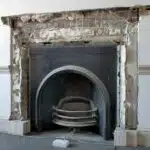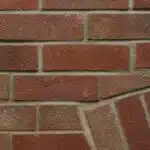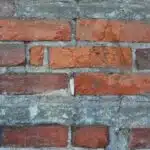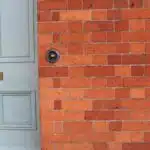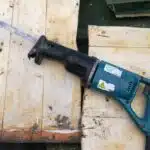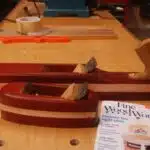As a masonry professional, I understand the importance of using the right tools for the job. One essential tool in any mason’s arsenal is the brick hammer, which is specifically designed for cutting and shaping bricks. While it may seem like a simple tool, mastering its use takes practice and skill.
In this article, we will explore how to effectively use a brick hammer like a masonry pro. We will cover everything from selecting the right type of brick hammer to proper technique for cutting and shaping bricks. Whether you are an experienced mason looking to improve your skills or a beginner just starting out, this guide will help you become more confident in using this essential tool. So let’s dive in and learn how to become a master at using the brick hammer!
Understanding The Anatomy Of A Brick Hammer
As masonry professionals, we know that the right tool can make all the difference in the world. When it comes to brick hammers, selecting the appropriate size, weight, and handle material is crucial to ensure maximum efficiency and safety on the job site. The first step in understanding how to use a brick hammer like a pro is to understand its anatomy.
The size of your brick hammer will depend on the size of bricks you are working with. A standard brick hammer ranges from 16-24 ounces in weight and has a length of 11-14 inches. It is important to choose a hammer that feels comfortable in your hand and allows for easy maneuverability during use. The handle material should also be considered – wood handles are traditional but may become slippery when wet, while fiberglass or rubber handles provide better grip.
The head of a brick hammer consists of two parts: the flat face and chisel end. The flat face is used for striking the center of bricks to break them in half or trim edges, while the chisel end is used for cutting bricks along their length or for chipping away at mortar joints. Familiarizing yourself with these parts will give you better control over your hammer and enable you to perform precise cuts and breaks with ease. With a solid understanding of the anatomy of a brick hammer, let’s dive into choosing the right type for your needs.
Choosing The Right Type Of Brick Hammer
1.When selecting a brick hammer, there are three main types to choose from – the bricklayers, club and pointing hammers. 2.The grip of the hammer should be comfortable, with a handle that is neither too long nor too short for the user. 3.A brick hammer should also be of a suitable weight for the user, so that it does not cause fatigue when used for extended periods. 4.The bricklayers hammer is the most versatile of the three types, with a double-faced head that is suitable for general brickwork. 5.The club hammer is heavier and has a single-faced head which is ideal for splitting bricks and paving stones. 6.The pointing hammer is the lightest of the three, with a single-faced head and chisel-shaped tip, designed specifically for cutting and shaping bricks.
Types Of Hammers
As a masonry professional, understanding the different types of hammers available in the market is crucial to ensure that you choose the right one for your job. Hammer weight and handle material are two important factors that you need to consider when choosing a brick hammer. A heavy hammer can be useful for larger jobs, but it may not be suitable for smaller tasks where precision is critical. Similarly, the type of handle material you choose can affect your grip and comfort level during work.
Another factor to consider when choosing a brick hammer is the shape of its head and claw length. For instance, hammers with chisel-shaped heads are ideal for cutting bricks, while those with square-shaped heads are better suited for breaking them into small pieces. The claw length also plays an essential role in determining the efficiency of your work as a masonry expert. A longer claw can provide more leverage when removing nails or prying materials apart.
In summary, selecting a brick hammer requires careful consideration of several factors such as weight, handle material, head shape, and claw length. As a masonry expert, it is essential to use the right tool for each job to enhance your productivity and ensure quality workmanship. By understanding these factors and their effects on your work performance, you can choose the best hammer that suits your needs and achieve optimal results on every project you undertake.
Hammer Grip
Choosing the right type of brick hammer is critical for masonry professionals to ensure that they can work efficiently and effectively. In addition to considering the weight, handle material, head shape, and claw length of the hammer, it is also essential to think about the grip. A proper grip can help prevent unnecessary strain on your hand and wrist and can increase your accuracy when working with bricks.
There are different types of grips that you can use when using a brick hammer. The most common grips are the straight grip and the pistol grip. The straight grip is ideal for those who prefer a more traditional style of holding a hammer. It allows for maximum control over the tool, which may be necessary when performing more precise tasks. On the other hand, the pistol grip offers a more ergonomic design that helps reduce hand fatigue by distributing pressure evenly across your palm.
Regardless of which type of grip you choose, it is vital to maintain correct posture when using a brick hammer. This means keeping your elbows close to your body and avoiding over-extending your arms or wrists. Additionally, make sure you have a firm but comfortable hold on the hammer without gripping it too tightly. By following these guidelines and choosing a suitable type of grip for your needs, you can enhance your performance as a masonry expert and ensure quality workmanship on every project you undertake.
Hammer Weight
When it comes to choosing the right type of brick hammer, understanding hammer balance is crucial. The weight of the hammer affects its balance, which in turn can impact your accuracy and efficiency when working with bricks. A heavier hammer may provide more force but can also cause fatigue and strain on your hand and wrist. On the other hand, a lighter hammer may not offer enough power for certain tasks.
To determine the appropriate hammer weight for your needs, consider the types of projects you typically work on. For heavy-duty jobs that require greater force, a heavier hammer may be necessary. However, for more delicate tasks that require precision and control, a lighter hammer may be more suitable. Additionally, proper swing technique is essential to ensure that you can deliver accurate blows without causing unnecessary strain on your body.
When swinging a brick hammer, make sure to keep your elbow close to your body and use your shoulder and arm muscles instead of relying solely on your wrist. This will help distribute the force evenly across your body and prevent excessive strain on any one area. It is also important to maintain a comfortable grip on the handle without gripping too tightly or too loosely. By incorporating these techniques and selecting an appropriate weight for your needs, you can enhance your performance as a masonry expert and ensure quality workmanship on every project you undertake.
Getting A Good Grip On Your Hammer
Improving grip strength is an essential aspect of utilizing brick hammers like a masonry pro. As a masonry expert, it is vital to ensure that your grip is firm and consistent throughout the task. This will enable you to control the hammer’s movements accurately and prevent unintentional injuries that may occur due to inadequate grip.
Proper hand placement is another critical factor when using brick hammers. To achieve an efficient grip on the hammer, place your dominant hand at the end of the handle while your other hand should be closer to the hammerhead. This positioning ensures that you have better balance and leverage when striking bricks or concrete blocks.
To help improve your grip strength further, try these three techniques:
- Squeeze a stress ball
- Use hand grippers
- Do wrist curls
Incorporating these exercises into your daily routine can help increase your overall grip strength, making it easier for you to handle brick hammers like a pro.
Transitioning into preparing bricks for cutting, it is crucial to note that proper preparation of bricks results in precise cuts and reduces wastage during construction. Therefore, acquiring knowledge about how best to prepare bricks for cutting is essential in ensuring seamless construction work.
Preparing Your Bricks For Cutting
With a good grip on your brick hammer, you’re ready to tackle the next step of masonry work: preparing your bricks for cutting. This process is crucial to ensure that you have accurate measurements and symmetrical cuts when building walls or other structures. Think of it like a chef preparing ingredients before cooking; taking the time to properly prepare your bricks will make the entire project go smoother.
One key aspect of preparing your bricks is measuring accuracy. Before making any cuts, take the time to measure each brick precisely and mark where you need to cut. This will help you avoid mistakes and ensure that all pieces fit together seamlessly. Use a measuring tape or ruler to get accurate measurements, and keep in mind that it’s always better to double-check than rush into cutting.
Another important factor in brick preparation techniques is marking where you need to make cuts. There are several methods for doing this, but one common technique is using a chalk line. Simply stretch the line across the brick where you need to cut, then snap it down onto the surface for a clear guideline. You can also use a straight edge or square as a guide for making straight cuts. With these tools at hand, you’ll be able to create clean, precise cuts every time.
Next, we’ll dive deeper into measuring and marking your cuts so that you can confidently move on to the cutting stage of masonry work. By taking the time to properly prepare your bricks, you’ll set yourself up for success in creating strong, beautiful structures that stand the test of time.
Measuring And Marking Your Cuts
Accuracy is an important factor when measuring and marking cuts for masonry projects. A variety of tools, such as pencils, tape measures, chalk lines, levels, and plumb lines, can be used to help ensure straight lines and right angles. It is important to establish reference points and layout lines, and then double check and recheck your measurements for accuracy. Taking the time to understand the proper use of the tools and techniques for measuring and marking will help the masonry professional ensure the desired results are achieved.
Measuring
Measuring techniques are essential for any masonry project. Proper measurement ensures that your cuts are accurate and precise, leading to a better-finished product. Before starting any cutting process, it is essential to have the correct measurements to avoid common measurement mistakes.
One of the most common measurement mistakes is assuming that all bricks are identical in size. While this may be true for some bricks, others have slight variations in size and shape. To ensure accuracy, measure each brick individually before making any cuts. Another common mistake is measuring from the wrong side of the brick. Always measure from the face side or front of the brick to ensure accuracy.
When measuring, use a straight edge or a level to mark your lines accurately. It is also important to use a sharp pencil or marker for clear and visible markings. When marking your cut lines on the brick, avoid using too much pressure as this can damage the surface of the brick.
In conclusion, proper measuring techniques are crucial for any masonry project. Avoid common measurement mistakes by taking individual measurements of each brick and measuring from the face side or front of the brick. Use a straight edge and a sharp pencil when marking your cut lines for accurate results. Remember that precision is key in achieving a polished finished product that will last for years to come.
Marking
Measuring accurately is only half the battle when it comes to masonry projects. The other half involves marking your cuts with precision. Marking is a critical step in ensuring that your cuts are accurate and will fit seamlessly into your overall project. To achieve this, you must have the right tools for marking.
One of the essential tools for marking is a straight edge, which can be a level or a ruler, depending on the size of the cut. A straight edge ensures that your lines are straight and even, preventing any unevenness in your cuts. Additionally, using a sharp pencil or marker is crucial for clear and visible markings that won’t smudge or fade during the cutting process.
When marking your cuts, take care not to apply too much pressure, as this can cause damage to the surface of the brick. Lightly mark your lines with the straight edge and pencil before going over them with more pressure for clarity. Remember to mark all sides of the brick that need cutting to avoid any confusion during the actual cutting process.
In conclusion, measuring accurately and marking with precision are both vital components of any masonry project. By using proper tools like a straight edge and sharp pencil or marker, you can ensure that your markings are clear and visible without damaging the surface of the brick. Taking care during this stage will lead to more precise cuts and ultimately result in a finished product that looks polished and professional.
Making Straight Cuts With Your Brick Hammer
To make straight cuts with your brick hammer, you will need to start by using a chisel to score the line you want to cut. This will give you a guide for where to strike with your hammer. Make sure to use even pressure when scoring the line so that it is deep enough for your hammer to follow but not so deep that it breaks apart easily.
Once you have scored the line, it’s time to start striking with your brick hammer. Use a firm grip and swing the hammer in a controlled motion towards the scored line. Use small, repetitive strokes rather than one large swing to keep your cuts straight and precise. As you work, check frequently that you are staying on track with your scored line.
If you’re feeling adventurous, creating curved cuts can add a decorative touch to any masonry project. To do this, simply vary the angle of your strikes as you follow the curved line of your design. Again, use small repetitive strokes rather than one large swing for greater control over the shape of your cut. With practice and patience, mastering this technique can take your masonry skills to new heights!
As we move onto creating angled cuts with your brick hammer, remember that precision is key in all aspects of masonry work. Taking the time to perfect your technique will pay off in the long run as it allows for greater accuracy and less wasted materials. So let’s dive into how best to achieve those angled cuts!
Creating Angled Cuts With Your Brick Hammer
Choosing the Right Angles: Before cutting any brick, it is important to consider the angle of the cut. Measure the angle, then adjust the angle of the brick hammer to match the desired angle.
Prepping for the Cut: Brick hammers should be placed against the brick in the proper position before beginning to cut. Adjust the hammer to the desired angle and make sure the brick is held securely in place.
Making the Cut: Once the brick hammer is in the desired position, strike it with a firm blow to make the cut. Make sure the brick does not move during the cutting process. Make sure to use the correct cutting technique to ensure a clean, precise cut.
Choosing The Right Angles
Creating angled cuts with your brick hammer requires a deep understanding of choosing the right angles. As a masonry professional, it is important to recognize that the angle of your hammer towards the brick can determine the success or failure of your project. The importance of practice cannot be overstated when it comes to mastering this technique.
One common mistake to avoid when creating angled cuts is using too much force. It is crucial to strike the brick at an appropriate angle, rather than relying on brute strength alone. This will ensure that you create clean and precise cuts without damaging the surrounding bricks. Additionally, take note of how the angle changes as you progress through each cut, and adjust accordingly to maintain consistency in your work.
Another vital aspect to consider is selecting the correct angle for each cut. Different types of bricks require different angles depending on their size and shape. Understanding these variations will allow you to make accurate cuts that fit perfectly into your design. With practice and attention to detail, you can achieve beautiful results that showcase your skill as a masonry expert.
Prepping For The Cut
As a masonry professional, it is essential to prepare the brick before making angled cuts with your hammer. One of the primary tools that you will need for prepping bricks is a chisel. The chisel allows you to carefully remove any excess mortar or debris that could affect the accuracy of your cuts. Properly prepping your bricks will ensure that they are smooth and even, allowing for clean and precise cuts without damaging the surrounding area.
When using a chisel, it is crucial to position yourself correctly. You should place one hand on the chisel handle and use your other hand to hold the brick steady. Position your body so that you have enough leverage to apply pressure while maintaining balance and control over the chisel’s movement. The proper positioning will allow you to make controlled movements with the chisel and create a consistent surface on which to work.
In summary, prepping your bricks correctly is an important step in creating angled cuts with your brick hammer. By using a chisel and positioning yourself appropriately, you can achieve smooth surfaces that make accurate cutting possible. With practice and attention to detail, you can produce beautiful results that showcase your expertise as a masonry professional.
Making The Cut
Creating angled cuts with your brick hammer is an essential skill for any masonry professional. It requires a combination of cutting techniques and safety measures to ensure that the surrounding area remains undamaged while achieving clean and precise cuts. Making the cut involves a series of controlled movements with the hammer, which can be challenging for beginners. However, once you have mastered this skill, you can produce beautiful results that showcase your expertise as a masonry expert.
Before making any cuts, it is crucial to take proper safety measures. Masonry professionals should wear protective gear such as gloves, goggles, and a dust mask to prevent any harmful debris from entering their eyes or lungs. Additionally, they should ensure that the work area is clear of any obstructions or hazards that may cause accidents. Once these measures are in place, it’s time to focus on making the cut using your brick hammer.
When making angled cuts with your brick hammer, it is essential to keep your hand steady and maintain control of the tool’s movement. Start by positioning the chisel at the desired angle and gently tap it with the hammer until you create an indentation in the brick’s surface. Once you have created an indentation, use firm but controlled blows to make a clean cut along the marked line. With practice and attention to detail, you can achieve accurate cuts that reflect your expertise as a masonry professional.
Shaping Bricks With Your Hammer
After mastering angled cuts with your brick hammer, it’s time to move on to shaping bricks. There are various brick shaping techniques that can be achieved with the use of a hammer, such as chiseling corners to create neat and precise edges. This technique is often used when building walls or structures that require a uniform appearance.
To chisel corners, start by holding the brick firmly in place and making small taps along the edge using the flat side of your hammer. Once you’ve made a groove, switch to the pointed end of your hammer and use it to chip away at the excess material until you achieve the desired shape. It’s important to work slowly and carefully, checking your progress frequently to ensure that you don’t over-chisel or damage the brick.
When working with a brick hammer, it’s essential to keep it well-maintained so that it continues to function properly. One tip for maintaining your brick hammer is to regularly clean it after each use. Use a wire brush or steel wool to remove any debris or rust from the surface of your tool. Additionally, make sure that you store your hammer in a dry area and oil it occasionally to prevent rusting and ensure smooth operation. By taking good care of your brick hammer, you’ll be able to create professional-quality masonry projects for years to come.
Tips For Maintaining Your Brick Hammer
Maintaining your brick hammer is crucial to ensure its longevity and optimal performance. A well-maintained hammer can make all the difference in your masonry work, making it more efficient and less strenuous on your body. Here are some tips for maintaining your brick hammer like a pro.
Firstly, sharpening your brick hammer is of utmost importance. A dull hammer can cause unnecessary strain on your arm and wrist, not to mention it won’t be as effective in breaking bricks or chipping away at stone. To sharpen your hammer, you can use a file or grinder to remove any nicks or chips from the blade. It’s recommended to do this regularly to ensure maximum efficiency.
Secondly, cleaning your brick hammer after each use is another important tip for maintenance. Over time, dirt and debris can build up on the hammer’s surface, which can lead to rust and other damage. You should wipe down your hammer with a clean cloth after each use and store it in a dry place.
Thirdly, inspecting your brick hammer before each use is essential for safety reasons. Check for any cracks or chips in the blade that could break off during use and cause injury. If you notice any damage, it’s best to replace the hammer immediately.
By following these tips for maintaining your brick hammer, you’ll have a tool that lasts longer and performs better. Remember to sharpen the blade regularly, clean it after each use, and inspect it before every job to ensure its safety and effectiveness. In the next section, we’ll discuss some important safety precautions when using a brick hammer.
Safety Precautions When Using A Brick Hammer
After learning how to maintain your brick hammer, it is important to understand the safety precautions when using it. As with most tools, there are inherent risks involved that could lead to serious injury if not handled properly. Some of these risks include flying debris, accidental striking of body parts, and overexertion leading to muscle strains or sprains.
To minimize these risks, it is important to use proper grip when holding the hammer. This means wrapping your fingers around the handle firmly but not too tightly. Additionally, eye protection should always be worn as small pieces of debris can easily fly into your eyes during use.
Before starting any project with a brick hammer, ensure that your work area is set up in a safe way. Remove any unnecessary clutter or tripping hazards and make sure that you have ample space to maneuver without hitting anything or anyone nearby. It is also highly recommended to have a first aid kit readily available in case of an emergency.
Table:
| Safety Precautions When Using Brick Hammer |
|---|
| Proper grip |
| Eye protection |
| Work area setup |
| First aid kit |
| Slow and steady movements |
When using a brick hammer, slow and steady movements are key to avoiding common mistakes such as overexertion or accidental injuries. Avoid swinging the hammer too wildly or quickly as this can increase the risk of injury and decrease accuracy in placement of bricks. By following these safety precautions and avoiding common mistakes, you can successfully use a brick hammer like a masonry pro. In the next section, we will discuss some common mistakes to avoid when using a brick hammer.
Common Mistakes To Avoid When Using A Brick Hammer
One of the most common mistakes made when using a brick hammer is an improper grip. The grip should be firm but not so tight that your hand becomes fatigued quickly. Additionally, the handle should fit comfortably in your hand, and you should have a good grip on the tool.
Another mistake commonly made when using a brick hammer is striking at an incorrect angle. If you strike too high or low, you risk damaging the masonry or injuring yourself. To correct this mistake, adjust your angle of strike until you find the sweet spot for maximum efficiency and effectiveness.
To avoid these common mistakes when using a brick hammer, it’s important to adjust your grip and strike angle as needed. By finding the right combination of both, you can ensure that your work is done correctly and safely. Remember that a little bit of practice goes a long way in mastering this essential tool for masonry work. In the next section, we will discuss how to use a brick hammer for demolition purposes.
Using A Brick Hammer For Demolition
Using a brick hammer for demolition is an essential skill for any masonry professional. To begin, it is important to ensure that you have the appropriate safety gear before starting any demolition work. This includes sturdy gloves, eye protection, and a dust mask to protect against flying debris and dust.
Once you have your safety gear in place, it’s time to start using your brick hammer. The first step is to identify the area you want to demolish and create a clear path of access. Then, use the flat side of the hammer to strike the surface of the bricks or other materials you want to remove. Apply enough force with each hit so that pieces start breaking off until you’ve removed all necessary material.
While using a brick hammer can be effective for demolition work, there are alternatives worth considering as well. For example, some professionals prefer using power tools like jackhammers or rotary hammers because they are faster and require less physical effort. Others may opt for hand-held saws or chisels if they need more precision or control over their cuts.
In summary, using a brick hammer for demolition requires proper safety gear and technique. While it’s effective for removing bricks and other materials, there are alternative methods worth exploring as well. In the next section, we will discuss advanced techniques for using a brick hammer that can help improve efficiency and precision on job sites.
Advanced Techniques For Using A Brick Hammer
Are you ready to take your masonry skills to the next level? If so, it’s time to learn some advanced techniques for using a brick hammer. Before we dive into these techniques, however, it’s important to review brick hammer safety. Always wear gloves and eye protection when using a brick hammer. Additionally, make sure that your work area is clear of debris and that you have a firm footing.
Now that we’ve reviewed safety, let’s move onto the advanced cutting techniques. One technique is known as “chasing.” This involves using the edge of the brick hammer to carve out shallow grooves in bricks or stones. Another technique is “nipping,” which involves making small cuts in bricks or stones with the chisel end of the brick hammer. Finally, there’s “splitting,” where you use the hammer end of the brick hammer to split bricks or stones along their natural line of weakness.
To help you visualize these techniques, here’s a table summarizing each one:
| Technique | Description | When to Use |
|---|---|---|
| Chasing | Carving shallow grooves | Adding texture |
| Nipping | Making small cuts | Fitting bricks into tight spaces |
| Splitting | Splitting along natural line of weakness | Breaking larger pieces into smaller ones |
With these advanced techniques and our focus on safety, you’ll be able to use a brick hammer like a true masonry pro. Keep practicing and refining your skills so that you can tackle any project with confidence and expertise.
As you continue to hone your skills with a brick hammer, you may come across some frequently asked questions about its use. In our next section, we’ll address some of these questions so that you can become even more proficient with this essential tool.
Frequently Asked Questions About Using A Brick Hammer
- Brick hammers come in two main types, the brick hammer and the club hammer.
- It is important to keep a brick hammer clean and oiled for optimal performance.
- The proper technique for using a brick hammer is to hold the handle with both hands, striking the brick with a sharp, downward motion.
- A brick hammer should be used to break up large pieces of brick or stone rather than chiseling away at smaller pieces.
- When using a club hammer, start by striking the brick with the flat side, then use the chisel edge to break off smaller pieces.
- For precision work, a cold chisel is a better choice than a brick hammer.
Types Of Hammers
When it comes to masonry work, using the right tools is crucial. One of the most important tools in a mason’s toolkit is the brick hammer. Brick hammers come in different types and are made from various materials, each suited for a specific task. Some of the common materials used for making brick hammers include steel, wood, fiberglass, and rubber.
Popular brick hammer brands that you might come across include Estwing, Marshalltown, Bon Tool, and Vaughan. Each brand offers different features such as handle length and grip comfort that can affect how comfortable it is to use the hammer during extended periods of time. It’s essential to choose a brand that fits your specific needs as well as your budget.
There are two main types of brick hammers: chisel-end hammers and pick-end hammers. Chisel-end hammers have a flat end that is typically used for splitting bricks or blocks apart. Pick-end hammers have a pointed end that is designed for breaking up concrete or rocks. Both types of hammers are useful for different tasks, so it’s essential to understand their differences before deciding which one to use for a particular job. By selecting the appropriate type of brick hammer for each job, you’ll be able to complete your task more efficiently and effectively than ever before!
Hammer Care
Understanding hammer maintenance is essential to prolonging the lifespan of your brick hammer. As a mason, you rely heavily on your tools, and your brick hammer is no exception. Regularly maintaining your brick hammer will not only save you money in the long run but also ensure that it performs optimally during each use.
One way to care for your brick hammer is to keep it clean and dry after each use. Moisture can cause rust to form on the metal parts of the hammer, leading to its deterioration over time. To prevent this, wipe down the hammer with a dry cloth after use and store it in a dry place.
Another way to maintain your brick hammer is by periodically sharpening its edges. Dull edges can make it difficult for you to complete tasks efficiently and effectively, leading to frustration and potentially causing damage to other materials. By keeping the edges sharp, you’ll be able to work faster while using less force, which can help reduce hand fatigue during extended periods of work. Taking these simple steps will help extend the lifespan of your brick hammer so that you can continue working without interruption or replacement costs.
Hammer Techniques
As a masonry professional, it’s essential to know the proper hammering techniques when using a brick hammer. Hammering angles and precision cuts are crucial in ensuring that your work is done correctly and efficiently.
One important technique to keep in mind is the angle at which you strike the surface. The correct angle can vary depending on the type of material you’re working with, but generally, a 45-degree angle is ideal for most applications. This angle allows for maximum force transfer from the hammer to the material, resulting in clean and precise cuts. However, some materials may require a shallower or steeper angle, so it’s essential to adjust accordingly.
Another technique to consider is precision cutting. When making cuts with your brick hammer, accuracy is key. It’s important to strike precisely where you want to make the cut to avoid damaging other materials or creating unnecessary waste. To achieve this level of precision, start with light taps and gradually increase force until you’ve made the desired cut.
By mastering these hammering techniques, you’ll be able to complete your work more efficiently while minimizing errors and waste. Remember always to maintain your brick hammer properly by keeping it clean and sharpened regularly for optimal performance.
Becoming A Master At Using The Brick Hammer
Mastering grip is essential to using a brick hammer like a masonry pro. The grip should be firm but not too tight, allowing for flexibility and control when striking the surface of the brick. It’s important to hold the hammer with your dominant hand, keeping your other hand behind your back for safety purposes. With practice, you’ll develop an intuitive sense of how much pressure to use with each swing.
Creating textures is another critical skill when using a brick hammer. Textured surfaces add depth and character to brick structures, making them more visually interesting and durable. To create these textures, start by holding the hammer at an angle and striking the surface of the brick repeatedly in different directions. Experiment with different angles and force levels until you find a texture that suits your aesthetic preferences.
In summary, mastering grip and creating textures are two key skills that will help you use a brick hammer like a masonry pro. With persistence and dedication, you can hone these skills over time and become an expert in your own right. Remember to prioritize safety while working with any tools or materials, and always seek additional training or guidance if needed.
Conclusion
As a masonry expert, it is important to understand the anatomy of a brick hammer and choose the right type for the job. A good grip on your hammer is essential for accuracy and safety, and preparing your bricks for cutting should not be overlooked.
Measuring and marking your cuts with precision will ensure a professional finish every time. For demolition, using a brick hammer requires skill and technique to avoid damaging surrounding areas. Advanced techniques can also be used, such as shaping bricks or creating decorative finishes.
Just like a mason builds a sturdy foundation with each brick laid, mastering the use of a brick hammer takes practice and dedication. By following these tips and techniques, you too can become an expert at using this essential tool in the world of masonry. Remember that each blow of the hammer is like a stroke of an artist’s brush, creating something beautiful from raw materials. With patience and practice, you can wield your brick hammer with artistry and precision, building structures that will stand the test of time.
Image Credits
- “Hammering Bricks in Place” by Bill Ward’s Brickpile (featured)








